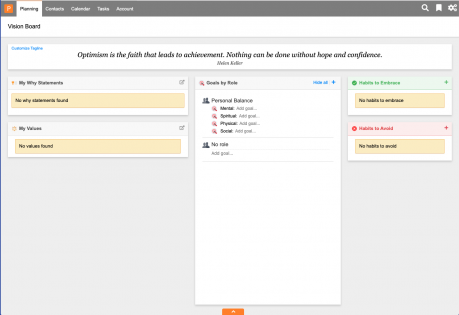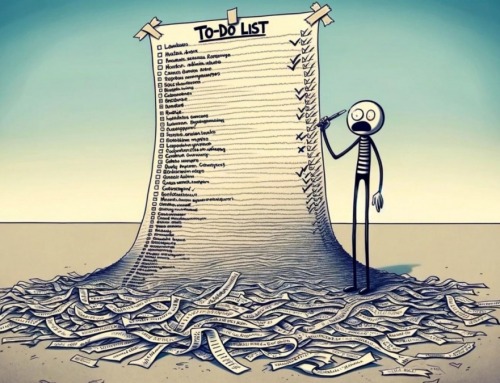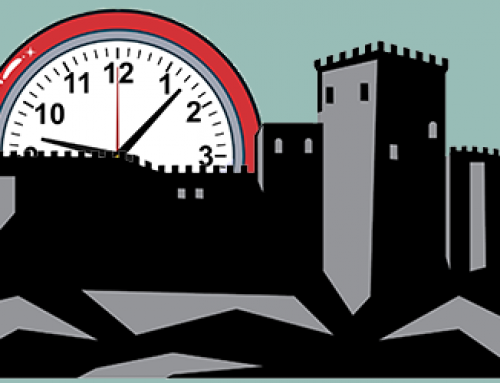| On average, about 45% of us consistently make a resolution for the new year. Unfortunately, about 22% of resolutions fail after about a week, 40% after a month, 50% after 3 months, and 60% after six months—and 81% after twenty-four months.
When we think about making big changes or improvements in our lives we’re often tempted to set huge goals, right? Like: get fit, or lose weight, or eat healthy, or find a better job, and even have a better life. |
|
| Those are all good things. Those are all important things. Unfortunately, these can also set you up for failure—because they lack clarity, they’re not specific—and so they’re hard to work towards or even achieve.
When you set goals for real change in your life, consider these tips: |
|
 |
Start with the Planning Experience in PlanPlus OnlineThe new Planning Experience is designed to work with you—like a tour guide. Taking you on the path from vague ideas to specific items you can schedule and accomplish. |
Figure Out Where You Currently AreOne of the problems with big, vague goals is that they don’t always consider where you currently are. If your goal is to “get fit” and you currently get out of breath after a 5-minute walk, you’re going to have a very different plan from someone who wants to “get fit” and who already plays jogs twice a week. To uncover your current reality, you need to track some simple data. Here are some examples for three different goals: Lose Weight Save More Money Be Happier |
|
Pick One Goal to Work WithYou might end up tracking data for several different potential goals. It’s important, to start, that you choose one thing to work on, at least initially. Chasing five different goals is just going to result in failing at all of them. It’s up to you how you choose to prioritize your goals, but you might consider choosing: |
|
| The goal that will have the most impact on your life. Perhaps your analysis of your current reality demonstrated that there’s a particular area that’s holding you back.
The goal that you can achieve fastest. This works a bit like the “snowball” method for getting out of debt – by seeing quick gains, you’re motivated to keep going. The goal that you’re most inspired by. You’re more likely to stick with something that you genuinely want rather than something that you’re trying to achieve just because you think you “should.” Decide Exactly What Success Will Look LikeAt this point, get specific about your goal. Your goal isn’t to “lose weight” – now, it’s “lose 20 lbs.” or “get back into my old jeans.” The more specific your description, the bigger the chance you’ll achieve exactly what you want. A good formula to apply is “From X to Y by When.” For example, from 200 lbs. to 170 lbs. by May 1st. This formula makes it easier to visualize and achieve what you want. Break Your Goal DownNow that you’ve chosen one specific goal, you need to break it down into small chunks. This helps prevent overwhelm and that horrible feeling that your target is so far away, you might as well give up. Make these small chunks specific and actionable. For instance, if your goal is “be happy and content with my life” then your chunks might be:
You don’t need to have every single step planned out. Just look for a handful of simple things that will take you in the right direction – you may well find that other ideas emerge once you start moving. |
|






